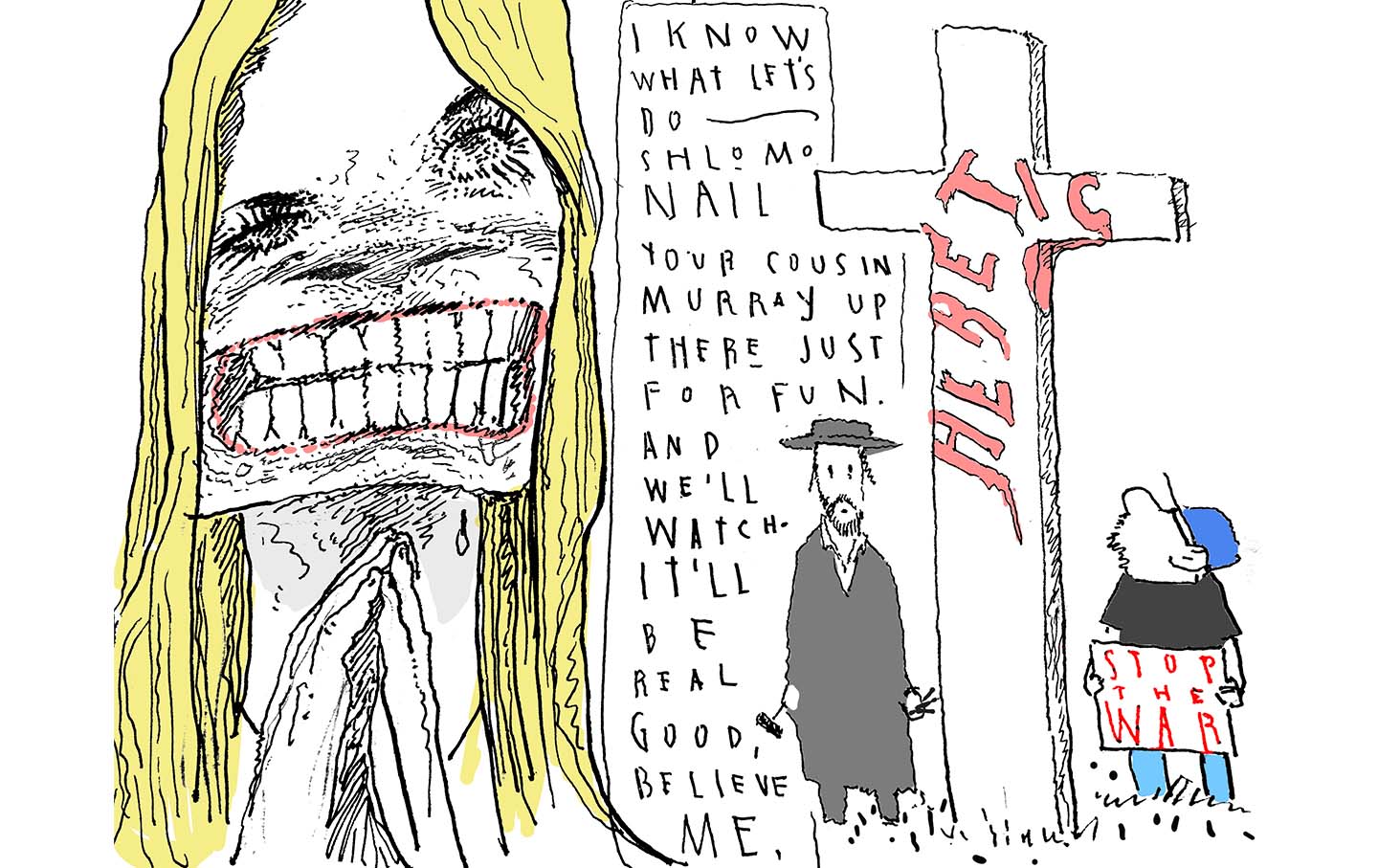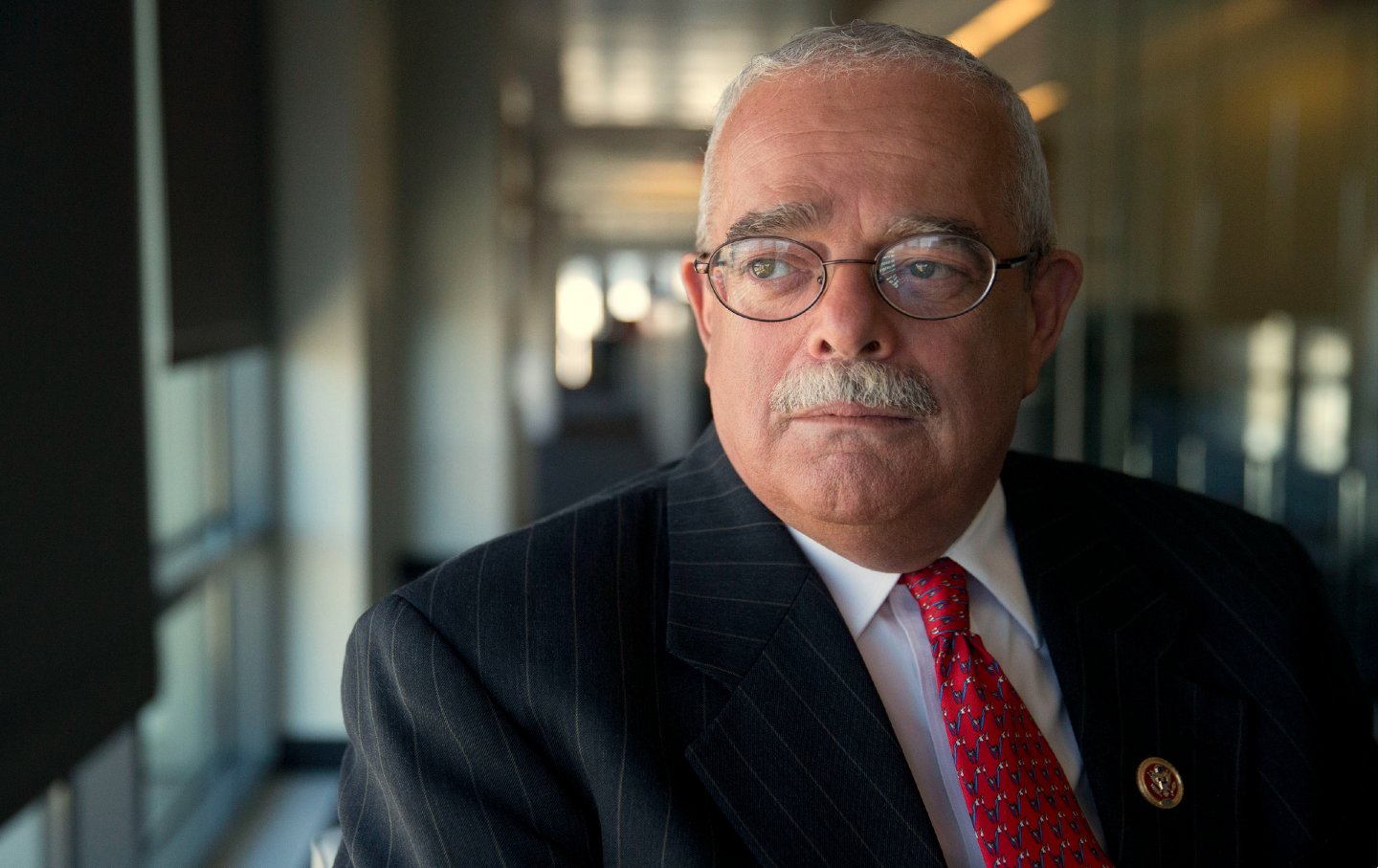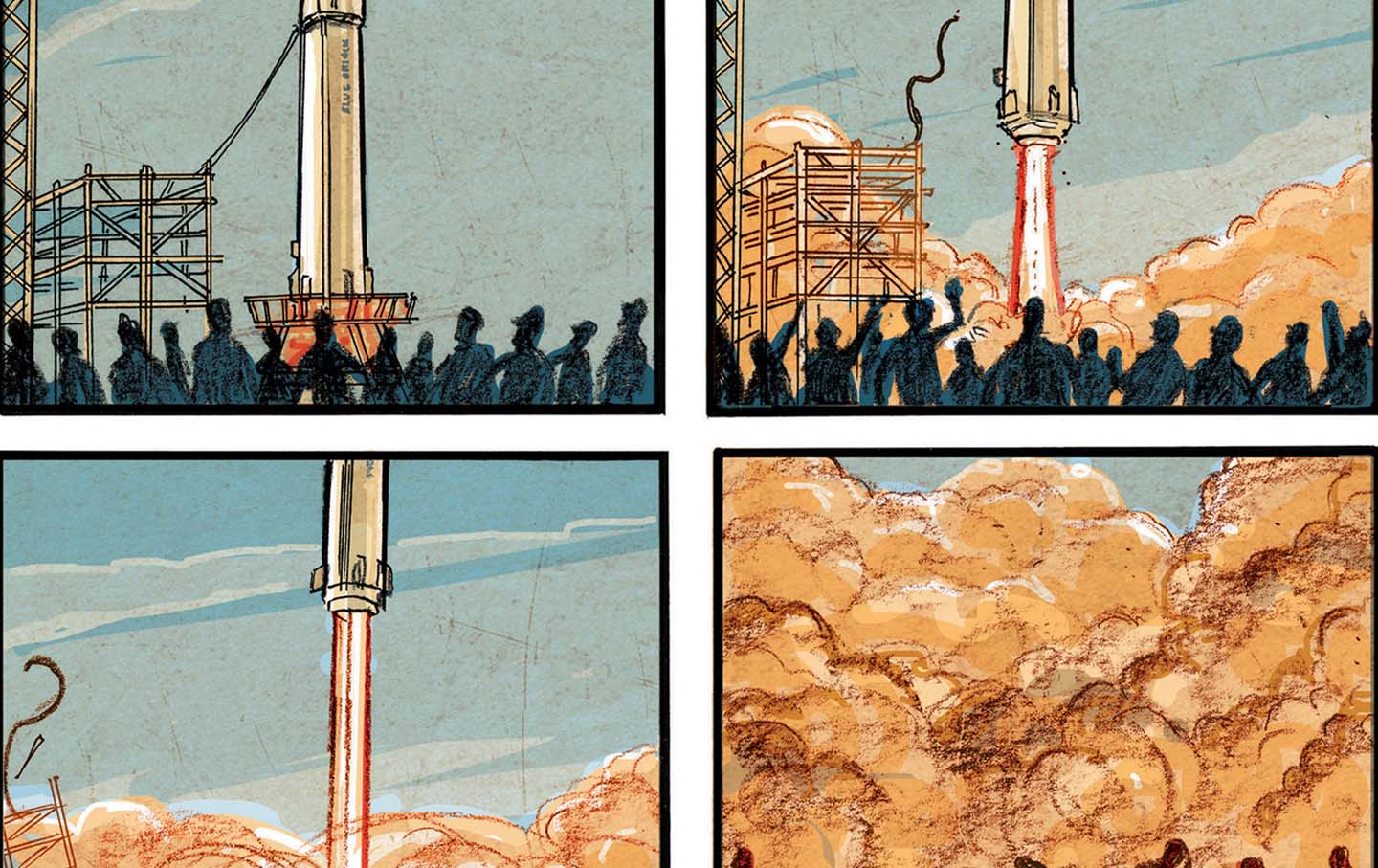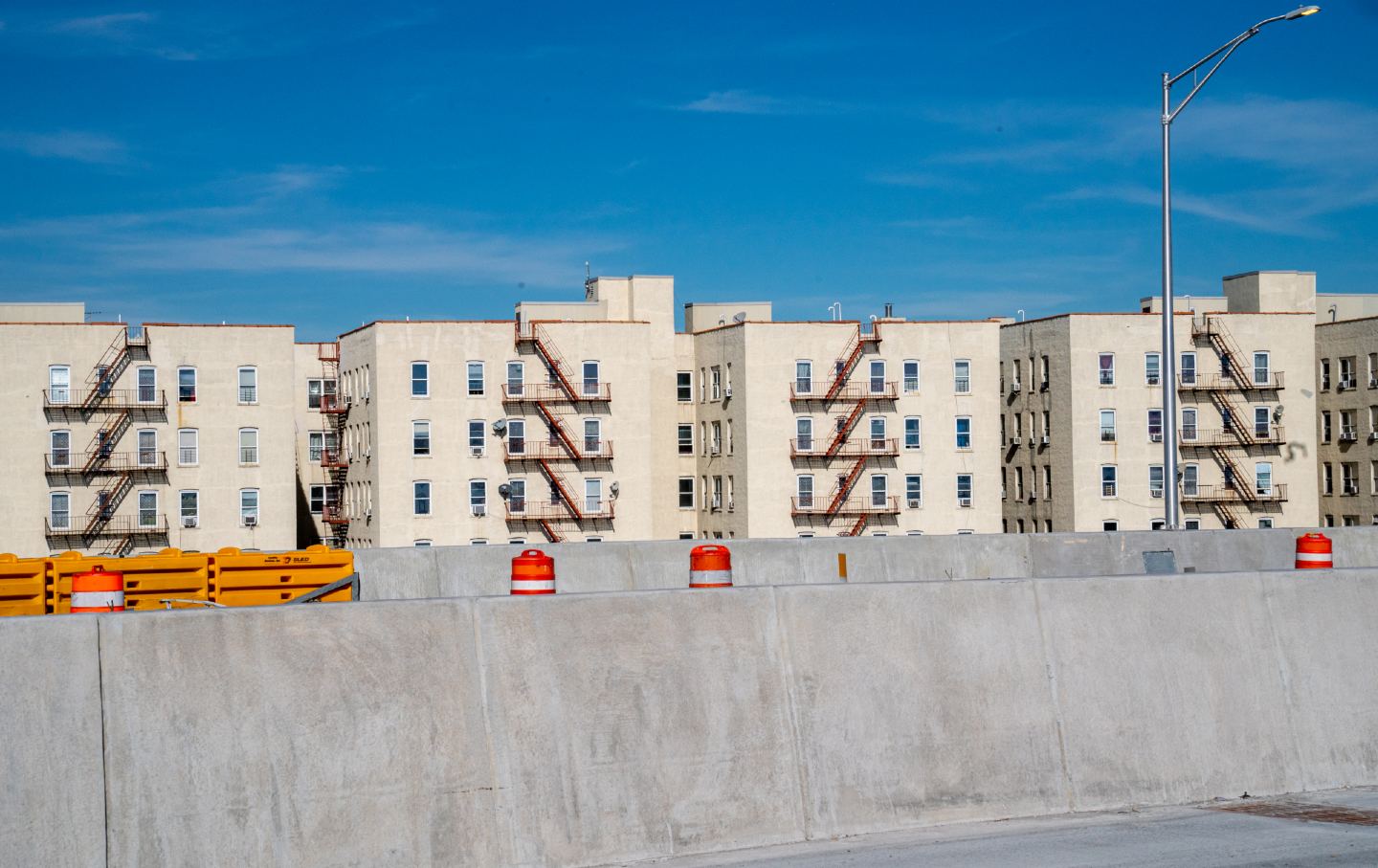The Extravagant Enigma of Jeremy O. Harris
An eccentric HBO documentary on the production of his hot-button play Slave Play doubles as a funhouse portrait of the playwright.

Jeremy O. Harris
(Courtesy of HBO)
“Black is evil… I want not to be.” This indelible line from Funnyhouse of a Negro (1964), theater giant Adrienne Kennedy’s one-act play, traces the hot-blooded themes of a young student’s mental upheavals: racial confusion, sexual violence, schizo-analytical intensity, ontological and existential doubt. Sarah, our protagonist, is embodied by four characters—Queen Victoria, the Duchess of Hapsburg, Jesus, and Patrice Lumumba—each representing a side of her split self as a Black woman with a white mother and a Black father. Sarah is haunted, we learn, by the blackness of her father, which is to say the blackness inside her, the blackness that is her.
Funnyhouse premiered three years before Loving v. Virginia, the landmark 1967 civil rights case that struck down state laws banning interracial marriage. Kennedy’s play is not so much concerned with the public sphere as it is with an interiority prodded by such external machinations: Sarah’s pain is grounded in blackness’s ability to haunt those born into it.
Funnyhouse is Jeremy O. Harris’s “favorite play of all time.” Funnyhouse is also one of the plays, along with Reza Abdoh’s Tight Right White and Jean Genet’s The Balcony, that is cut to on-screen when Harris is workshopping with hired actors in his latest film project, Slave Play. Not a Movie. A Play. This HBO production shares not simply thematic concerns with Kennedy’s play—hypersexuality, identity crises, and the fraught relationships between blackness and whiteness—but also a concern with form. Kennedy used form as an essential tool, mirroring the fragmentation of the self with the play’s montage of impressions, scenes, and imagery.
Slave Play. Not a Movie. A Play’s staccato title is fitting for the experiment at the root of the project, but it’s still fairly confusing. Is this a sequel to Harris’s 2018 theatrical work, simply titled Slave Play? Is it a film adaptation? Harris’s 2018 Slave Play depicts a group therapy encounter in which couples seek counseling about the intimacy issues in their relationships, which are constituted as inextricable from racial and sexual violence. It features three interracial couples (two straight, one gay) and a pair of therapists, who are conducting a study on “Racialized Inhibiting Disorder.” But unless one is up-to-date with the plethora of online commentary, an unwitting member of the audience usually won’t know what they’re watching until the second act. The first act appears to be set on a plantation in Virginia (one that is soundtracked by Ginuwine and Rihanna), featuring various characters (slave, slave master, wife, servant). These racial antagonisms are set within the professionalized mode, and this drama, enacted by the couples, is in fact a therapeutic style called—as coined by the therapists—“antebellum sexual performance therapy.”
For the duration of Slave Play. Not a Movie. A Play’s 79-minute running time, there is no comparable bait-and-switch. And the therapized group here is perhaps the TV audience sitting at home on their couches. The HBO production re-creates some elements of the play, hiring actors to workshop Slave Play once again, filmed in part at the William Esper Studio in November 2022. It also incorporates film clips from Mandingo and Gone With the Wind, open tabs with links to X and PornHub, news clips, and split-screen performances. Halfway through the proceedings, the original cast of Slave Play appears: the actors who performed it when it was produced as Harris’s Yale School of Drama thesis project. Harris wheels over a portable table with a laptop, and the original cast members watch a version of what has already taken place in this film. At this point, no one seems to know what the documentary (it is now a documentary) is about. Harris asks the cast members, but they don’t know either. Does the director? “I don’t think you know what this is about,” one of the actors tells Harris.
Harris’s goal in Slave Play. Not a Movie. A Play seems to be to cling to the avant-garde and radical aspects of the theater form inherited by European and American drama (such as audience participation, Verfremdungseffekt, silence, surrealism, the theater of the absurd) through a less immediate or participatory medium—the filmic register. It is notable that form is emphasized more here than race, sex, and gender, which were the watchwords in 2018. In Slave Play. Not a Movie. A Play, Harris talks with an editor (and star) of the movie, Pete Ohs, about the difference between film and theater:
“There’s this thing that happens with theater that doesn’t happen with a film that is specific to these questions in this play, which is like, theater invites a conversation. You can literally stand up in the middle of a theater and, like, yell out at the person on the stage and they have to respond. You can literally stop it. You can’t do that with a movie. Once a movie’s made, there’s no stopping it. It’s just gonna go. You can turn it off, but you can’t engage.”
Governing the bounds of said conversation, however, are the security personnel in a Broadway theater, as seen in the beginning of Slave Play. Not a Movie, which incorporates cell phone footage of a white woman standing up in the middle of a performance of the play at the John Golden Theatre in November 2019 screaming, “How the fuck am I not a fucking marginalized member of this goddamn society?” As the late critical theorist Lauren Berlant once wrote, “The person who doesn’t get the joke becomes a joke.”
The film’s dramaturgical perspective reveals itself as less a dialogue between audience and actors and more a conversation between the two main characters: Harris and Harris. “I am so excited that you guys are all here to be part of my weird little experiment,” he says to his actors from the stage floor of the black-box studio. He knows, describing the project as: “I’m making this thing that’s in part about Slave Play but in whole about me.”
Inasmuch as Slave Play. Not a Movie announces its deviation from film in favor of theater, a secondary thread is that it curiously reframes the play’s own reception. In July 2020, the comedian and writer Ziwe said to Harris: “My first question to you is, Jeremy O. Harris, why do you hate Black women?” Perhaps that particular critique was left on the cutting-room floor. Slave Play. Not a Movie also diminishes a crucial detail about the play’s final scene, which some people read as a white man raping a Black woman and others read as two people practicing consensual non-consent, a kind of kink that involves role play and sexual fantasy.
Harris offers one measured not-quite regret: “One moment that I think wasn’t loud enough for certain audience members, based on their critiques, is that, like, it’s not loud enough to people that I’m completely conscious of the fact that the Black people don’t talk to each other in this play.”
Slave Play. Not a Movie does not exactly shy away from its critiques, but it focuses on the polarizing elements. There is the opening Karen in the audience, which is followed by anonymous chatter from off-screen: “This play is a bunch of garbage…. I haven’t seen people walk out so much from a show.” We also hear from social media personality Uncle Hotep, wearing a MAGA Santa hat. The critics are mostly portrayed as fools, exaggerated and stupid.
Yet Slave Play. Not a Movie’s imperfect form (not a movie, not yet a play) further reveals the cracks in Slave Play the play. While somewhat shallowly incorporating critiques of some elements of the play (which was decried as pornographic, misogynist, anti-Black, etc.), the film misses an opportunity to truly access the theatrical: what the audience brings to bear on a play, and a sincere exploration of what can shatter the ego, such as how Kennedy expressed Sarah’s splayed-open subjectivity in Funnyhouse of a Negro.
Among liberals, so-called interracial marriage is perceived as a symbol of optimism and progress, however naïve. In Slave Play, with its therapized individuals in search of “healthy” relationships, these interpersonal dynamics function as a normative baseline, which becomes a substitute for the structural conditions of racialized and sexualized abjection. The interracial couple, as examined in Slave Play—with its dramatization of processing and worship of slapstick pathologies—inadvertently reveals the idealism of multiracial discourse, obscuring how sexuality shapes politics outside of the bedroom and the clinic.
In Slave Play’s “Notes on Style,” which are read by Harris in the first five minutes of the movie and shown on-screen, almost like opening credits, the play is deemed “a comedy of sorts. It should be played as such.” In other words, the “play” in Slave Play is a confrontation with the multiple meanings of “play” and their inextricability from each other: “play” as in theater, “play” as in childlike play, and “play” as in BDSM play and especially race play, a form of erotic roleplay in which racial—and often racist—dynamics are eroticized and performed.
The language of theater and of BDSM share some vocabulary: “play,” “scene,” “performance.” So, too, do the language of artistic practice and of therapy: namely, “process.” Can risk awareness—that process of fully understanding that nothing is ever truly safe, though some of us may proceed anyway—happen in film? Every D/S relationship needs some sense of where fantasy ends and reality begins. Sex therapists, psychoanalysts, scholars, and kink practitioners suggest that erotic humiliation can allow intellectual thought about historical, racial, and sexual violence. This is true in practice, for some people, but can it be true for this cultural object? Though “sex” is not a name for a single act that begins and ends, in Slave Play. Not a Movie. A Play, the line between the fantasy and the therapeutic reality and the reality of the documentary mode is even more blurred.
Popular
“swipe left below to view more authors”Swipe →Why this project now? The PR answer is perhaps that it coincides with the West End production of Slave Play in London, in which the American actress Olivia Washington plays Kaneisha. If Harris had made Slave Play: The Movie (which he had been asked to do), he wouldn’t have been able to be the star. In its bowdlerized documentary form, Slave Play. Not a Movie. A Play allows Harris to call more attention to himself, and his direction reduces the whole affair to a jovial attempt to pull back the curtain and explain. But what is behind the curtain, as in TheWizard of Oz, is not a wizard but ordinariness, machinery, and projection. And it is this man who gets the final word, not the critics and not Kaneisha, whose lines make up the end of the play. Harris’s last words, after saying he can’t put an actor’s praise in the documentary and then putting the actor’s praise in the documentary: “I look crazy.”








